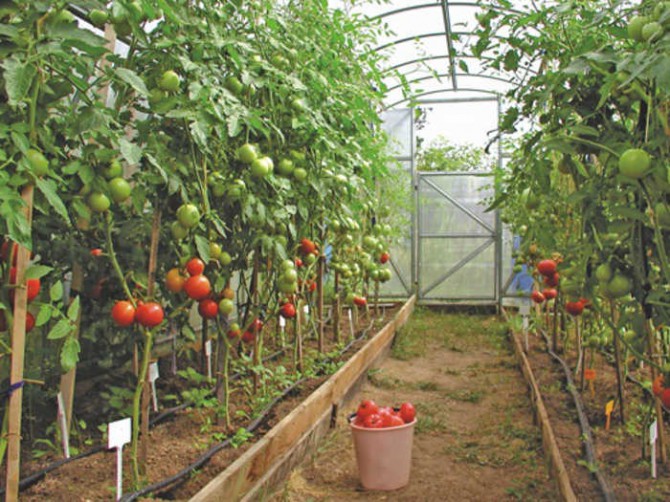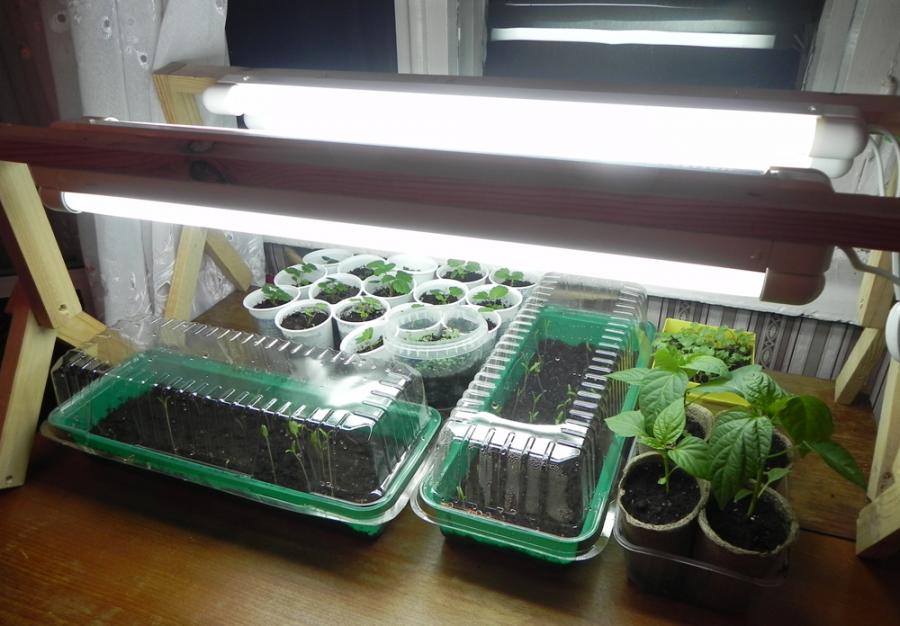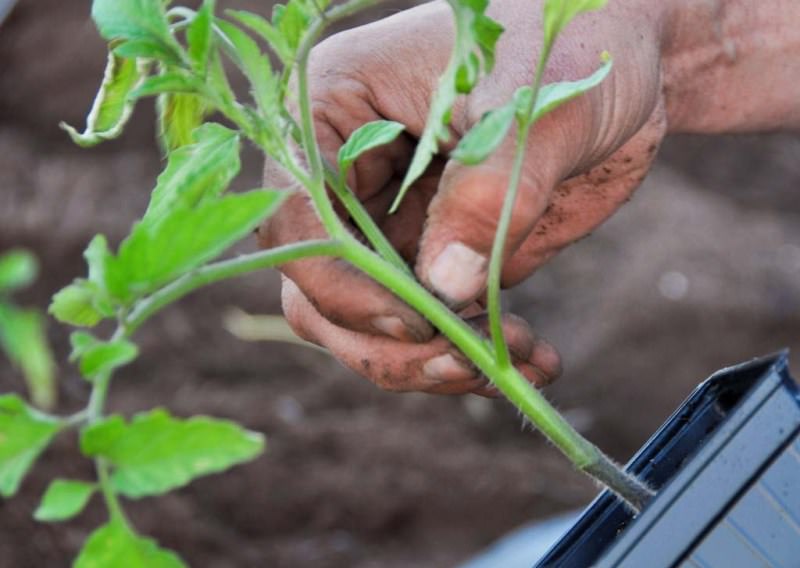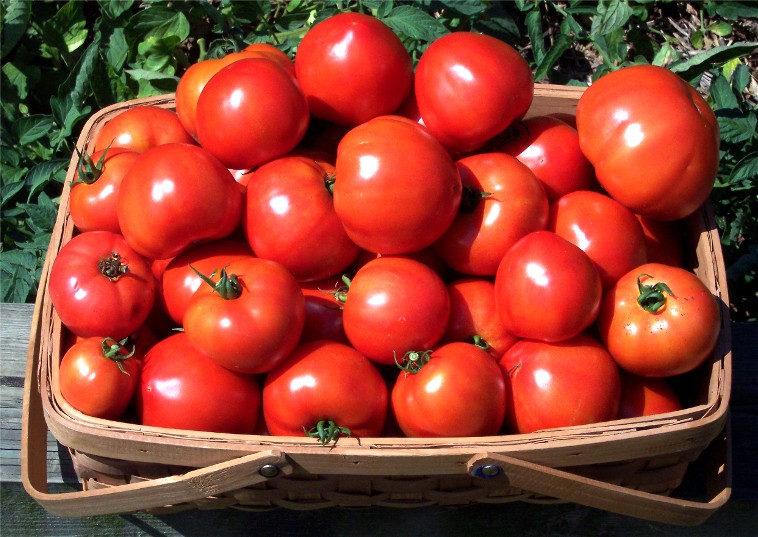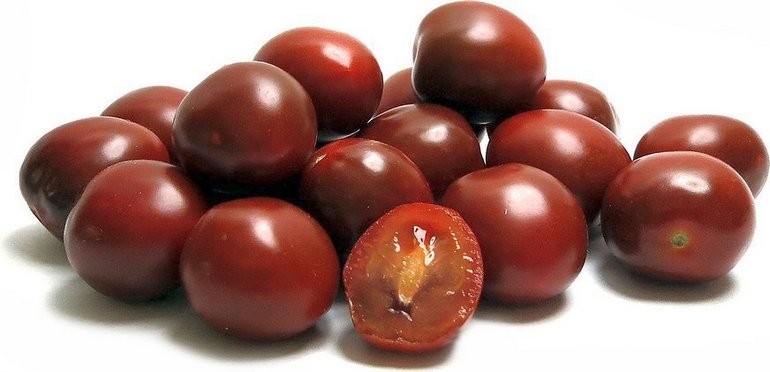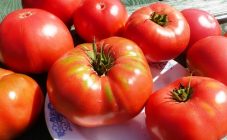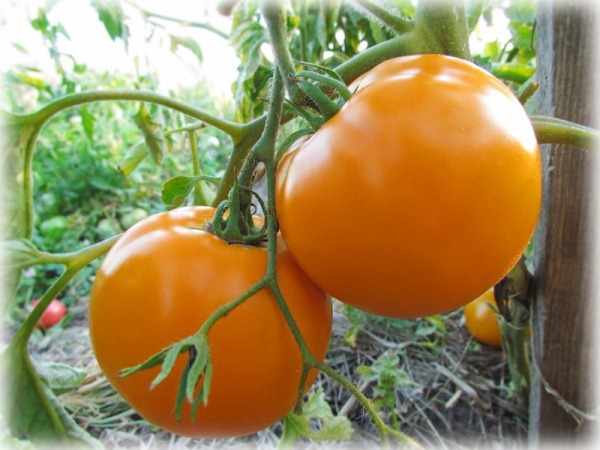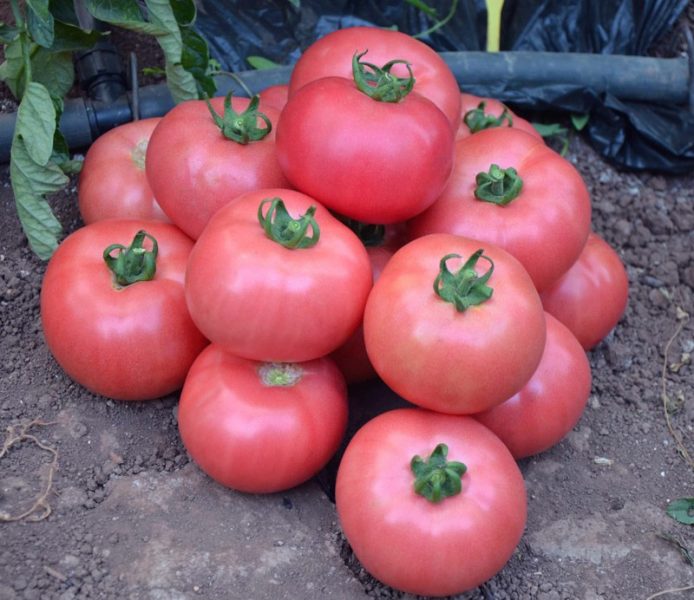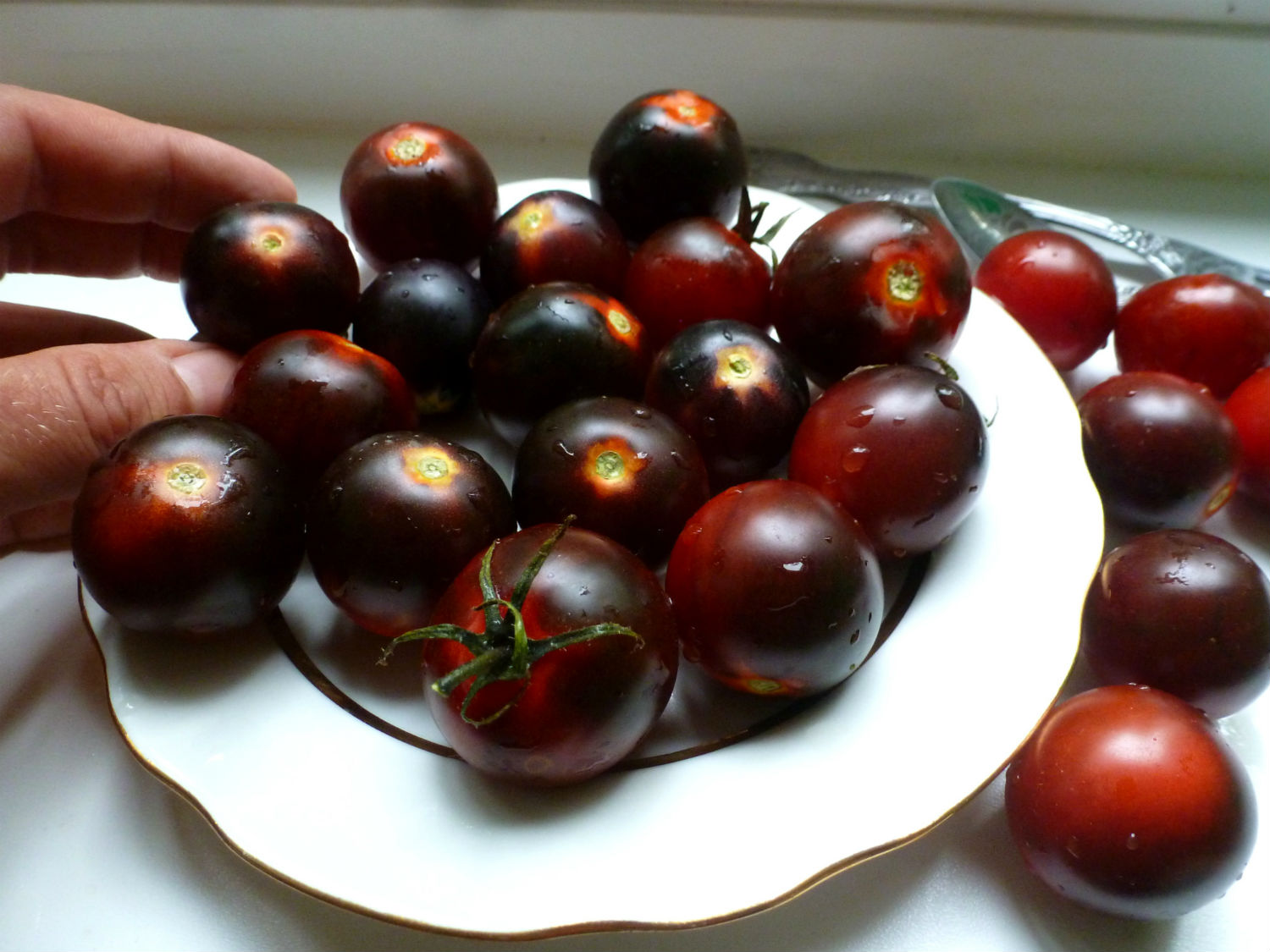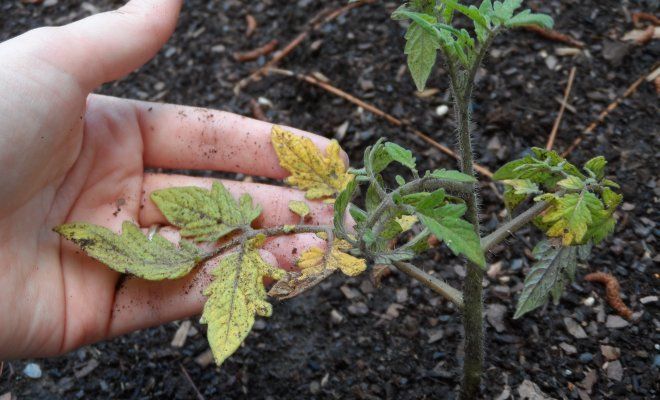Content:
It is a high-yielding variety that produces many excellent tasting tomatoes. At the same time, the plant is distinguished by its unpretentiousness and ease of cultivation. The variety of tomatoes is loved among gardeners and summer residents. Consider what Lyalaf tomatoes are, their characteristics and description of the variety, and the features of agricultural technology.
The beginning of tomato cultivation in Russia dates back to the 18th century. With the help of the seedling growing method, domestic agronomists managed to achieve full ripening of the fruits.
Tomatoes la la fa - a hybrid variety bred by domestic breeders, has not yet been entered in the State Register. Belongs to the first generation of crossed varieties.
Description of the variety
The characteristic features of La la fa tomatoes and the description of the variety will help you easily distinguish them.
The plant is powerful, medium foliage. Trunk with shortened internodes. Leaves of a deep dark green color, regular shape. It is grown on a trellis garter. The bush can reach one and a half meters in height.
The first flower cluster forms after the eighth leaf. Subsequent brushes go through two sheets. In one brush, there are on average up to 6 tomatoes (the number depends on the conditions and care). The brush can hold up to 5 kg of tomatoes.
Lyalafa tomatoes are round, slightly flattened, even. The skin is dark red in color. The weight of each fruit is from 130 to 170 g. Small fruits are rarely in one cluster.
The taste of tomato is very pleasant, with a weak aroma. The pulp is juicy, there are no voids inside. The fruit does not crack.
The variety is resistant against tobacco mosaic, fusarium, cladosporium, apical rot.
The fetus develops within 100-105 days. Refers to early maturing. Harvesting starts in July and ends in autumn. From one bush, you can collect up to 4 kg of fruit. Up to 20 kg of fruits are harvested from 1 m2.
The fruits are of universal use. Salads, canned food and tomato products, tomato juice are prepared from them. Small fruits are suitable for whole fruit canning.
Agrotechnics
To get a good harvest of a plant, it is necessary to take proper care of it.
Growing seedlings
To speed up a good harvest, you need to sow seeds for seedlings. The optimal time for sowing seeds is March. In this case, after about 60 days, that is, in May, you can get seedlings that can be planted in the ground. It is recommended to plant seedlings in a greenhouse. Disembarkation times will vary because they are affected by:
- climatic conditions in the area;
- greenhouse structures;
- weather in a particular year.
For seedlings, prepare the soil. Either a nutrient mixture or soil is suitable for it. To prepare the soil, sod land, humus and baking powder are used.
Seeds are sown in pots, common containers. When growing a plant without diving, a small amount of soil should be poured into the container, with its further pouring. Seeds must be sown to a depth of 2 cm. They are covered with foil or glass. When shoots appear, they need to be exposed to light.
Seedling care
Further care of seedlings consists of the following actions:
- moderate watering (using irrigation);
- diving (when the seedling has two leaves);
- feeding (it is carried out only after the dive has been carried out).
For feeding the seedlings, a mixed fertilizer or a special composition for the care of nightshade plants is used. Top dressing must be combined with watering. In this case, it is better not to fall on the leaves.
Tomatoes should be accustomed to new growing conditions 14 days before transplanting. Provided that the weather is warm and the air temperature has stabilized, the seedlings should be taken out on the balcony or in the air. With improper care, the growth of seedlings will be slightly delayed, and the plants will begin to hurt. Hardening helps to accelerate growth and develop resistance during transplantation.
Greenhouse care
In May or early June, tomatoes can be planted indoors. To do this, you need to prepare the ridges in advance. In the fall, they are dug up and fertilized.
Tomatoes will grow well after cucumbers, cabbage, onions, or legumes. It is not recommended to apply a lot of organic fertilizers. It is necessary to add rotted manure, ash. Superphosphate is recommended in the fall. In the spring potash salt is added.
Tomatoes are planted when the soil reaches a temperature of 14-16º. Early landing is undesirable. In this case, there is a high probability of frost return, and in such conditions, even in a greenhouse, plants may suffer. Choose a cloudy day. In sunny and hot weather, planting is carried out in the evening.
For planting, you need to prepare a hole, water it with water and plant seedlings. They are sprinkled with soil and compacted a little. You need to plant 3 stems per square meter. If the tomatoes are planted more densely, then the yield may decrease.
In a greenhouse, the seedlings should be covered with non-woven materials. They protect from the sun's rays and frost.
Watering
The first watering should be done one week after planting. For this, warm water is used. Then watering is done 2 times during the week. You need to focus on the weather and the condition of the plants. Water it regularly and abundantly. The humidity of the air and soil should be observed and this indicator should not be allowed to increase. If tomatoes grow in high humidity conditions, they will begin to hurt and become infected.
To create an optimal microclimate, you need:
- ventilate the greenhouse;
- do not close the doors during the heat, even at night;
- do mulching with hay, sawdust, wood chips or roots.
The latter technique allows you to protect plants from weeds and waterlogging, from which they get sick.
Top dressing
The following fertilizers are used for feeding:
- Cow dung (dilution 1:10), bird droppings (dilution 1:20);
- Mineral fertilizers (nitrophoska is most often used);
- Sodium or potassium humates;
- Superphosphates;
- Potassium sulfate;
- Ash.
It should be remembered that nitrogen fertilizers are used at an early stage of cultivation. After the tomatoes begin to bloom, plants should receive more potassium and phosphorus at the beginning of the growth of fruits. Fertilizer "green tea" has proven itself well. This is the name of the infusion of fresh herbs in a barrel. This composition is infused for a week. Diluted in a ratio of one liter per bucket of water.
Foliar dressing should be done by spraying. A little iodine salts, boric acid and urea are added to the water. After this treatment, the reddening of the fruit accelerates.
Grassing and harvesting
Since this variety belongs to the tall ones, the plants need to be pinned and formed a bush. Agronomists advise growing Lyalafa tomato in two stems. The rest of the shoots are removed. For the second stem, you need to leave the strongest stepson under the first flower brush.
For a plant to be powerful, it needs supports. Stakes with ribbons or trellises are used.
If the plant is looked after correctly, then the first fruits can be removed already at the beginning of July. In the future, the collection will continue until early autumn. It is best to shoot “technically ripe” tomatoes. This is necessary so that the plant does not waste energy on their further maturation.
Green fruits ripen well indoors. At the same time, new tomato fruits will form and ripen on the bush.
During the period of fruit collection, you can carry out preventive treatment of plants: spray them with whey, infusion of garlic, milk with iodine. Excellent results are obtained by spraying with Bordeaux liquid or compounds containing copper.
Advantages and disadvantages of the variety
The main advantages of La La Fa tomato are:
- High productivity;
- Early ripening, which makes it possible to get a good harvest even in the zone of risky farming;
- Good taste of tomatoes;
- Excellent transportability and long shelf life;
- Good commercial qualities and their preservation for a long time;
- Disease resistance;
- Resistant to bad weather conditions;
- The ability to grow fruits in a greenhouse and in the open field;
- Simplicity of care.
The disadvantages of this variety are conditional - the obligatory pinching and regular fertilization of plants. Without these conditions, it is impossible to get a good harvest.
La La Fa variety gives tomatoes with excellent taste, which can be stored for a long time and used for all kinds of purposes. The variety bears fruit early, and the rules for caring for it are very simple. Subject to all the care recommendations, you can get a good harvest even in a greenhouse.
